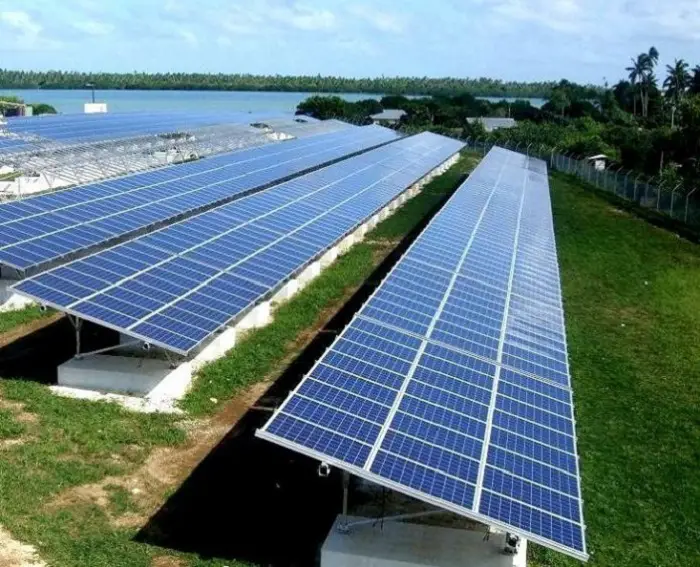The government of Namibia has officially opened the Ejuva One and Ejuva Two solar plants which are set to help diversify the country’s energy mix.
The Deputy Minister of Mines and Energy Kornelia Shilunga who officiated the opening of the plants added that the solar plants also increase generation capacity and reduce carbon emissions through producing green, emission-free electricity, promotion of employment and skills development during construction and operation and providing positive demonstration effects for solar development in Namibia and neighboring countries.
Also Read: Ghana to construct its largest solar farm
“We are particularly pleased about the strong local component and the positive impact during construction on local job creation and skills development,” said Kornelia Shilunga.
The mega plants which were built and managed as one project have a total build cost of US $21m and are located side by side. They will feed an estimated 25.8 GWh/y into Namibia’s national grid.
Electricity output
The two projects entailed the construction, ownership, operation and maintenance of two solar energy generating facilities, with a capacity of 5MW each, in the Omaheke region in Namibia.
The electricity output will be sold to the Namibia Power Corporation (Pty) Ltd under a 25-year Power Purchase Agreement. Both Projects were awarded through the Renewable Feed in Tariff Program.
The project is among the 14 renewable energy projects commissioned under the interim Renewable Energy Feed-in Tariff programme, which was initiated by the Ministry of Mines and Energy and the Electricity Control Board, to establish independent power producers in Namibia.
Local equity partners own 34% of the two plants, Consolidated Infrastructure Group subsidiary CIGenCo 49% and asset manager Mergence Unlisted Investment Managers 17%.
Namibia currently faces significant energy shortage, and has only been able to meet its energy needs through costly energy imports from neighboring countries.
